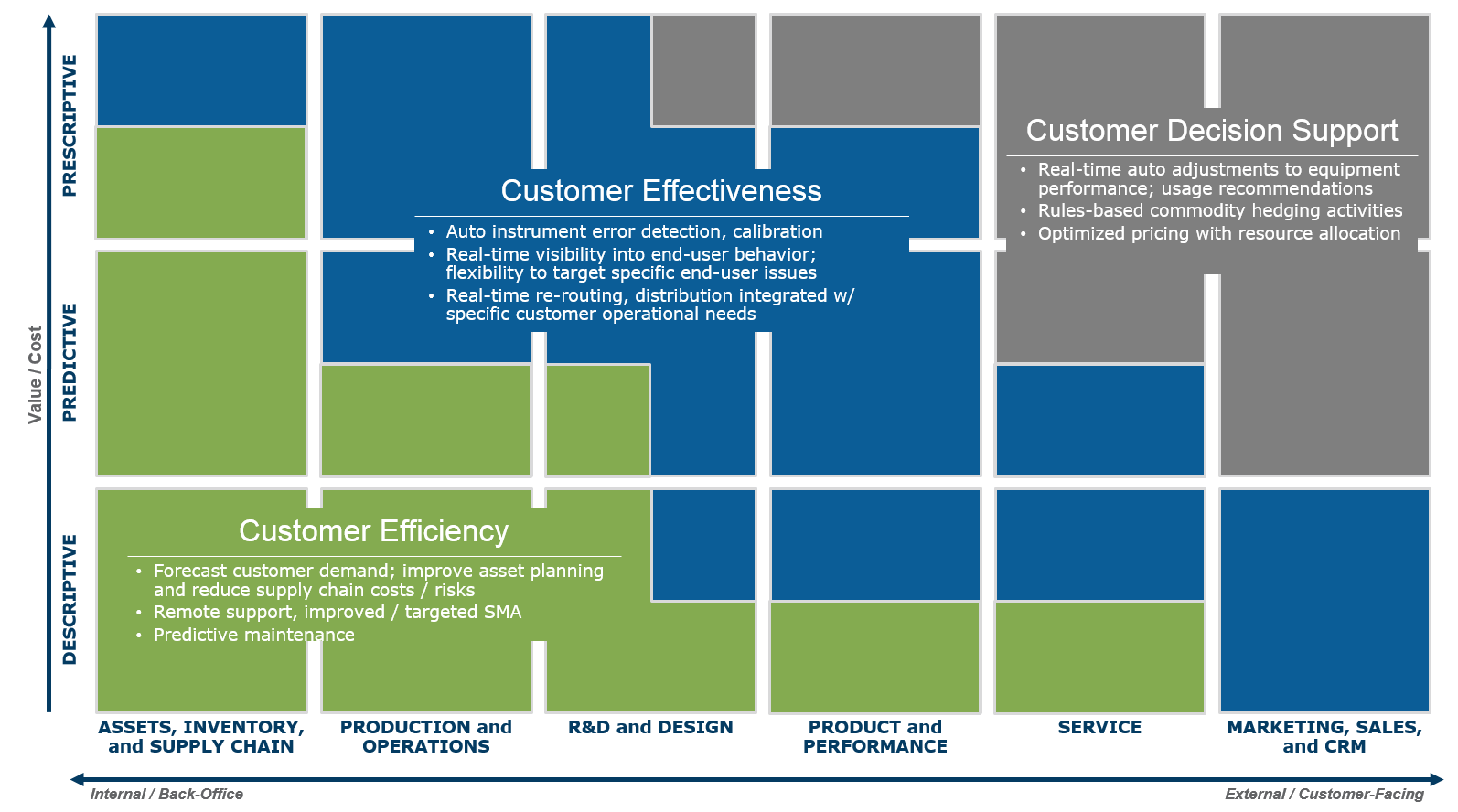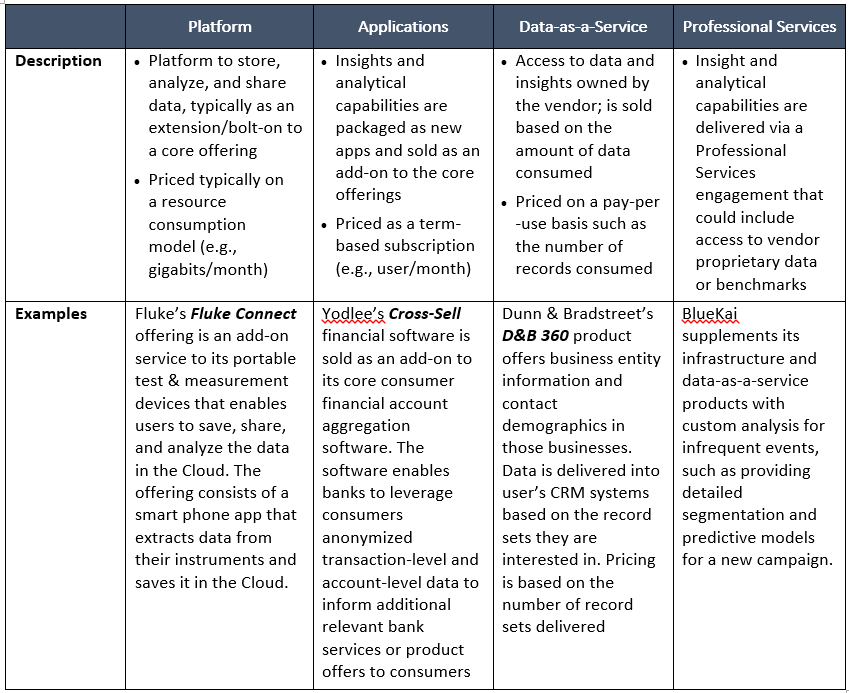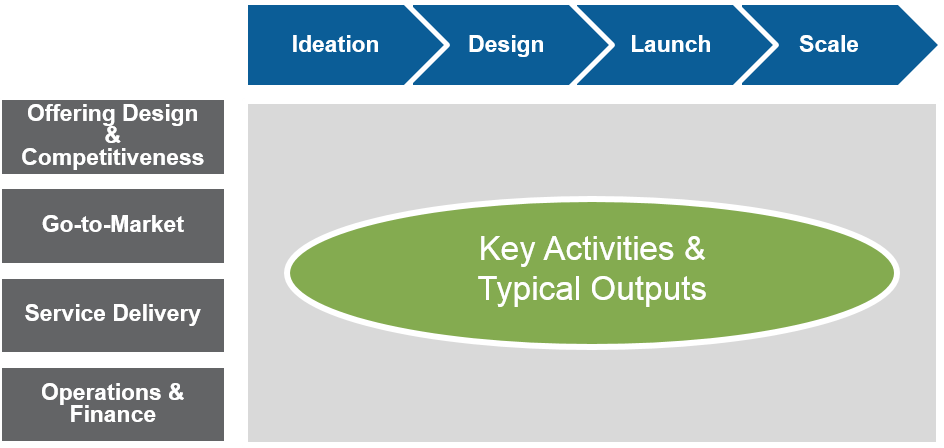After years of excitement — even hype — Big Data technologies have reached a level of maturity that make them increasingly relevant and accessible to established enterprises. However, outside of a few specific and well-publicized use cases — Internet applications, personalized retail, optimized logistics — established technology companies frequently struggle to identify and profitably commercialize new data-driven offerings.
In Waterstone’s experience, many tech companies possess a range of potentially valuable information assets that can fuel innovative Big Data-driven offerings. Unlocking and capturing that value, however, requires a methodical approach to conceptualize, incubate and launch new offerings. With focus and discipline, organizations can leverage internally generated data to deliver new offerings that provide distinct value for their customers while simultaneously sustaining differentiation for themselves.
Four critical considerations
Waterstone’s research shows that the successful definition, launch and scaling of a Big Data offering requires four critical considerations:
1. Use a data-driven, workflow-centric approach to conceptualize the offering
Successful Big Data-enabled offerings are grounded in rigorous, data-driven opportunity identification. Rather than starting with market trends or customer-needs analyses that often steer other approaches toward “me-too” plays, follow a series of defined steps to:
- Identify sources of data — what is being produced, what is being stored — across the value chain
- Determine applicable types of analyses and opportunities to combine and enrich datasets
- Evaluate the resulting information from three value contexts: productivity (i.e., more efficient operations), effectiveness (i.e., better quality outcomes) and decision support (i.e., new insights)
Waterstone’s analysis of 80+ Big Data use cases shows that a range of information assets and data-driven opportunities exists across a company’s value chain as illustrated below.
Waterstone Big Data Offering Ideation Framework

2. Plan the monetization approach early
Big Data offerings often can require monetization methods that are outside the bounds of the traditional value capture systems employed by an enterprise. These methods, while typically linked to data usage, must be tuned to match the context and consumption models for the target customer. Typical Big Data monetization strategies can be summarized into four distinct approaches shown below:

3. Assess the operating model changes required for success
Launching and scaling Big Data offerings requires careful design of several key elements of the associated operating model: the go-to-market (GTM) approach, service delivery model, financial model and operational processes.
A few critical considerations that are unique to data-driven offerings include:
- Solution-like nature of Big Data offerings will require solution-selling capabilities.
- Vertical industry solutions should align short- and long-term benefits of the Big Data solution with known segment pain points.
- Constructing and delivering Big Data offerings will require new and emerging skill sets such as those of data scientists and data architects.
- Adjustments needed to operational processes and systems, such as pricing systems, billing, customer support, etc., should not be underestimated.
4. Take a structured approach to launching and scaling the offering
An integrated, cross-functional approach is critical to accelerate the time to market for the offering. The approach should methodically structure work streams and activities across offering definition, go-to- market approach, service model design, and operations and finance.
New Offering Definition and Launch Methodology

Getting started
To help effectively prepare companies to identify and capture new revenue opportunities, senior executives should consider:
- Ideation: Over the last 12 months, has your organization identified opportunities for new data-driven products or services offerings? Have these opportunities been evaluated using traditional new product portfolio assessment tools, or have new evaluation frameworks and criteria been developed?
- Design: Has monetization of data assets been considered as a core or derivative component in any of your last three new product or service launches? If yes, how has the financial performance of those new offerings tracked relative to plan?
- Launch: Have you observed different adoption rates for your data-driven product or service offerings? If these adoption rates were lower than plan, what strategies or tactics have you deployed to help bolster uptake? If the adoption rates were higher than plan, do you know why? Have you codified any learnings from this and shared them across the organization?
- Scale: If you have scaled data-driven product or services, have you encountered unique localization or channel requirements? What customer retention strategies have you deployed? How successful have they been?
Big Data can fuel innovative new products and services by instigating more informed decision making and insights. Organizations that adopt — and stick to — rigorous, robust new offering methodologies that are properly tuned for the Big Data offerings context can achieve margin-rich revenues and sustained growth.
John Zuk is a principal at Waterstone Management Group based in the firm’s San Francisco office. His career has focused on the intersection between business strategy and technology product development. John’s skill set has been honed by more than 20 years of management consulting, product/services development and operations leadership experience in technology-centric companies. Contact him at jzuk@waterstonegroup.com.
Hubert Selvanathan is a principal at Waterstone based in the San Francisco office. He has more than 18 years of operating and consulting experience in the technology sector. Hubert focuses on helping clients capitalize on disruptive growth opportunities by launching and scaling new technology offerings and businesses. Contact him at hselvanathan@waterstonegroup.com.
TJ Devine, senior associate, also contributed to this article.
